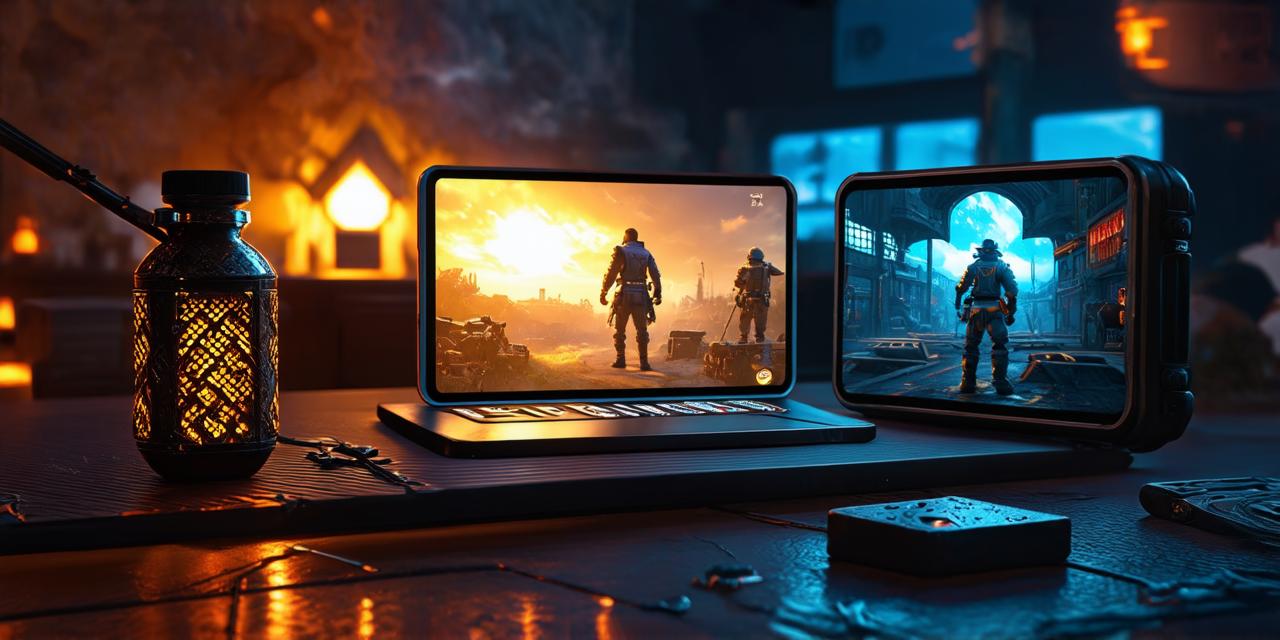Choosing the Right Platform:
When developing a mobile game, selecting the appropriate platform is crucial to reach the target audience effectively. UE5 supports both iOS and Android platforms, making it easy for developers to create games that can run seamlessly on both devices. However, when deciding which platform to target, it’s important to consider factors such as the target demographic, hardware requirements, and performance capabilities. For instance, if the game is aimed at a younger demographic, iOS may be a better choice as it has a larger share of this demographic.
Setting Up Your Development Environment:

Once the platform is chosen, the next step is to set up the development environment. UE5 comes with an intuitive and user-friendly interface that simplifies the game development process. Developers can choose from multiple programming languages such as C++, Blueprints, and Python, depending on their preferences and skill level. Additionally, UE5 includes several built-in tools such as profiling, animation tools, and LOD systems to optimize the game’s performance and reduce loading times.
Designing Your Game:
The design phase of mobile game development is critical as it sets the foundation for the rest of the process. When designing a game, developers should consider factors such as the target audience, platform, and hardware requirements. Simplified and intuitive control schemes are essential for mobile games to make them easy to play on small screens. Touch-based controls can also be optimized to improve the gaming experience. Analytics tools can also be used to gather data on player behavior and preferences to make informed design decisions.
Creating Your Assets:
Assets, including 3D models, animations, textures, and sound effects, are essential components of any game. UE5 includes a powerful 3D modeling tool called Unreal Engine Editor that allows developers to create high-quality assets with ease. Developers can also import their own assets or use pre-made assets from the Unreal Marketplace. It’s important to optimize assets for mobile devices to ensure smooth performance and minimize loading times. Additionally, compression techniques can be used to reduce the size of assets and improve load times.
Implementing Physics:
Physics is an essential component of any game that simulates realistic physical behavior in the game world. UE5 includes a powerful physics engine that supports rigidbody dynamics, collision detection, and soft body simulations. By implementing realistic physics, developers can create a more immersive and engaging game experience for players. Additionally, testing should be done thoroughly to ensure the physics simulation is accurate and consistent across all devices and platforms.
Optimizing Your Game:
Optimization is crucial when developing mobile games as devices vary in processing power and memory capacity. UE5 includes several tools to help optimize the game’s performance, including profiling tools that identify performance bottlenecks in the code. LOD systems can also be used to reduce the number of draw calls and improve performance by reducing the complexity of objects in the game world. Compression techniques such as texture compression can also be used to minimize the size of assets and reduce loading times.
Publishing Your Game:
Once the game is developed, it’s time to publish it on the app store or Google Play. UE5 includes a streamlined publishing process that makes it easy to submit the game to the app stores. Developers can also use analytics tools to track player engagement and identify areas for improvement. Additionally, marketing strategies such as social media advertising, influencer collaborations, and cross-promotion can be used to increase visibility and attract more players.
Case Study: “PUBG Mobile”
PUBG Mobile is one of the most popular mobile games in the world, developed by Bluehole Studios using UE5. The game was released on both iOS and Android platforms in 2018 and quickly gained popularity due to its engaging gameplay, realistic graphics, and optimized performance for mobile devices. PUBG Mobile’s success can be attributed to several factors such as its ability to adapt to the mobile platform, the use of analytics tools to gather data on player behavior and preferences, and the implementation of optimization techniques to ensure smooth performance on all devices.
Summary:
Creating a mobile game using UE5 is an exciting and rewarding process that requires careful planning, design, development, and optimization. By following the steps outlined in this article, developers can create a successful and engaging mobile game that will capture the hearts of players around the world. However, it’s important to keep in mind that developing a mobile game requires significant time, effort, and resources. Additionally, staying up-to-date with the latest developments in mobile technology and gaming trends is crucial to ensure the game remains relevant and competitive.
